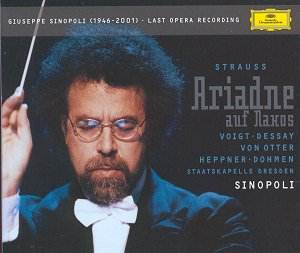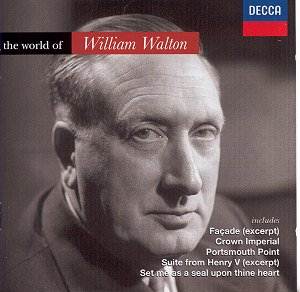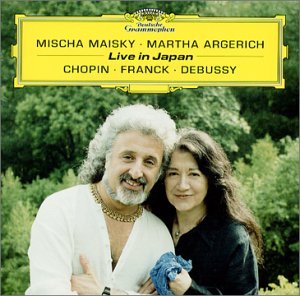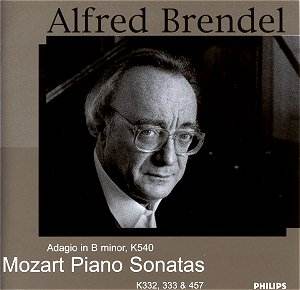 Composer: Richard Strauss
Composer: Richard Strauss
Works: Ariadne auf Naxos
Performers: Deborah Voigt (soprano, Ariadne/Primadonna), Anne Sofie von Otter (mezzo, Composer), Natalie Dessay (soprano, Zerbinetta), Ben Heppner (tenor, Bacchus), Albert Dohmen (bass-baritone, Music Master), Romauld Pekny (bass, Major-domo), Stephan Genz (baritone, Harlekin), Christiane Hossfeld (soprano, Naiad), Angela Liebold (mezzo, Dryad), Eva Kirchner (soprano, Echo), Michael Howard (tenor, Dancing Master), Sami Luttinen (bass, Truffaldino), Christoph Genz (tenor, Brighella), Ian Thompson (tenor, Scaramuccio), Romuald Pekny (narrator, Major-Domo), Jürgen Commichau (bass, Footman), Matthias Henneberg (tenor, Wig-Maker), Klaus Florian Vogt (tenor, Officer)
Recording: Recorded in the Lukaskirche, Dresden in September and December 2000
Label: Deutsche Grammophon
Richard Strauss’s Ariadne auf Naxos stands as a masterful tapestry of operatic innovation, mischief, and emotional gravitas. Premiered in 1912, the opera intricately weaves together the frivolity of commedia dell’arte with the weightier themes of love and abandonment, creating a unique dichotomy that has intrigued audiences and performers alike. Giuseppe Sinopoli’s interpretation, captured in this posthumous recording, offers a profound insight into the work’s dualistic nature, demonstrating the conductor’s keen affinity for Strauss’s musical language, particularly through the lens of his beloved Dresden Staatskapelle.
Sinopoli’s approach to the score reveals a meticulous attention to detail that enhances the opera’s rich textures. The Overture, in particular, is a revelatory experience. Here, the orchestra’s shimmering strings and lush woodwinds evoke a dreamlike quality, a hallmark of Strauss’s compositional style, while Sinopoli’s pacing allows the music to breathe. This subtlety is crucial, as it sets the stage for the contrasting worlds that coexist within the opera. The balance he achieves—between the comedic and tragic, the lighthearted and the profound—demonstrates his deep understanding of Strauss’s intentions.
Deborah Voigt’s portrayal of Ariadne is a standout element of this recording. Her voice, steeped in experience with both Strauss and Wagner, infuses the character with a palpable sense of longing and sorrow. The aria “Es gibt ein Reich” is delivered with a poignant gravitas that captures the essence of Ariadne’s despair. Voigt’s phrasing is meticulous, each note steeped in expressive nuance, particularly during the climactic moments of her final love scene with Bacchus. In contrast, Ben Heppner’s Bacchus, though technically proficient, occasionally falters in emotional engagement. While his high and demanding part is executed with commendable skill, it doesn’t quite reach the same depths of expression that Voigt achieves, highlighting a slight imbalance in their duet.
The contributions of Natalie Dessay as Zerbinetta are nothing short of electrifying. Her rendition of “Grossmächtige Prinzessin” is a tour de force, where her agile soprano dances effortlessly through the vocal pyrotechnics, showcasing both technical brilliance and dramatic character. Sinopoli’s adept handling of the orchestral accompaniment allows Dessay’s voice to shine without overshadowing the intricate orchestral fabric. Anne Sofie von Otter’s portrayal of the Composer complements this dynamic beautifully, her rich mezzo-soprano lending a grounded perspective to the otherwise whimsical narrative.
Recording quality plays a pivotal role in the success of this release. The sound engineering captures the ensemble’s nuances, allowing the listener to appreciate the intricate interplay of voices and instruments. The acoustics of the Lukaskirche lend a warmth to the recording, enhancing the lush orchestration that Strauss so masterfully crafts. Each voice is distinct, yet they blend seamlessly, creating a cohesive sonic experience that is particularly commendable in the offstage trio of Naiad, Echo, and Dryad, whose harmonies are balanced perfectly against the orchestral backdrop.
Positioning this recording within the broader context of Ariadne auf Naxos discography, it stands as a significant addition, rivaling notable interpretations by conductors such as Herbert von Karajan and Sir Colin Davis. Karajan’s 1954 mono recording with the Philharmonia Orchestra remains a benchmark for its dramatic intensity, while Kempe’s interpretation offers a more lyrical approach. Sinopoli’s reading, however, is distinct for its clarity and depth, revealing layers of meaning that can be overlooked in more straightforward interpretations.
Meriting high praise for its artistic integrity and technical execution, this recording of Ariadne auf Naxos under Sinopoli is a testament to the conductor’s legacy and his affinity for Strauss. It encapsulates the opera’s complexity in a manner that invites repeated listening, offering fresh insights with each encounter. A compelling addition to the Strauss catalogue, it is a recording that deserves a prominent place on the shelves of both connoisseurs and newcomers alike.



